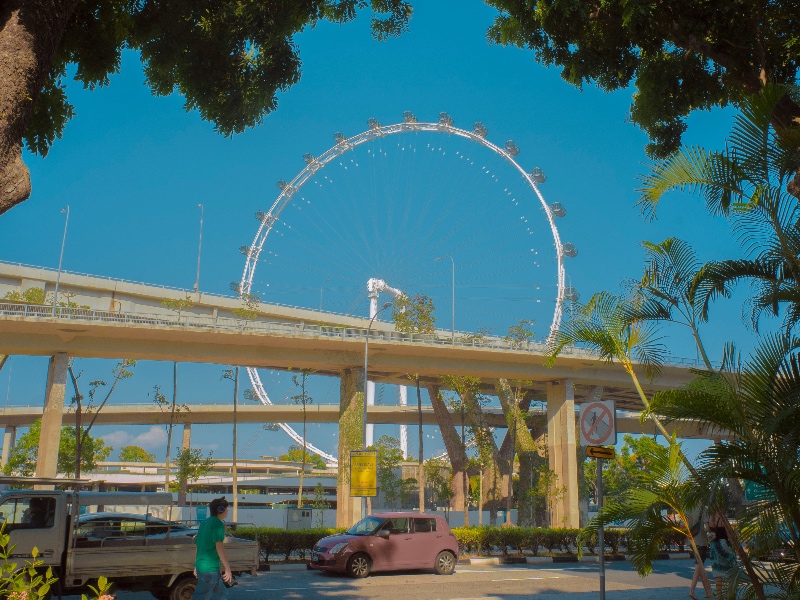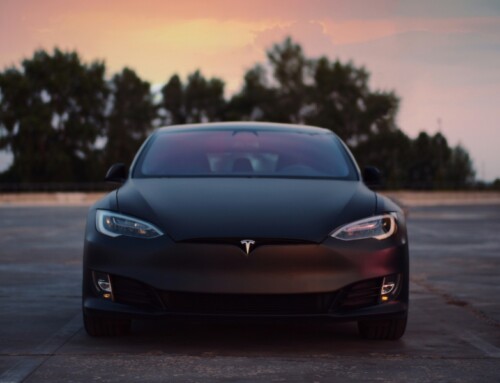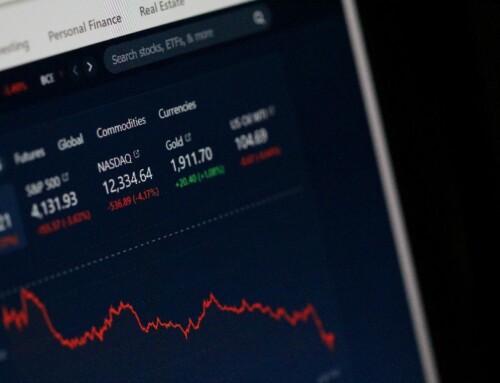Recently a five-room HDB flat at Margaret Drive was sold for a record SGD$1.73 million. To put this in context, when I first started in property sales about 20 years ago, a five-room HDB flat in Ang Mo Kio was about SGD$380,000. I know because the first five-room flat which I sold was in Ang Mo Kio and it was at SGD$380,000. Fast forward two decades later and we are seeing valuations of HDB flats past a million Singapore dollars. To put this into context for those who are unfamiliar with Singapore property, an HDB flat is a type of government housing that is built by the government. While I do agree that Singapore’s take on public housing is very different to what many other countries, I do think that the price increases have been a bit too exuberant. When you speak of the term public housing to just about anyone in any other country, the mindset will be of a housing product that is built with budget materials and where the less wealthy of society would be living. In most cases, public housing would be a form of low cost rental housing and because the property is not owned by the inhabitants, its state of upkeep is usually poor.
In Singapore, public housing is very different. Most Singaporeans, over 70 per cent, live in public housing. The state of upkeep of public housing is very high. In fact, in many instances, public housing can be in a better state than private condominiums. The people who purchase public housing may include professionals like doctors and lawyers. Singapore is a very safe place to live and hence the guarded and gated community that comes with most condominiums is less of a draw in Singapore as compared to countries which are less safe. There are ample public swimming pools, public and private gyms, clubs and parks such that the draw of living in a condominium with facilities is no longer an appeal to many. Singapore promotes home ownership and there are many generous grants to try and offset the cost of owning a home. Here the term ownership is used broadly. The ownership refers to the ownership of the long term lease of the property. As this is a long term lease, it is imperative that the owners of these properties recognise that the property needs to be returned to the state at the end of the lease.
So then the mantra of buy property and wait is applicable in Singapore then? Well judging from how property prices have increased, it does seem like those who have purchased Singapore properties did make gains. Albeit paper gains if they never sold their properties.
However, property prices are not the only asset prices rising. Car prices have also been rising. In Singapore, car ownership is controlled using a ballot system where bidders will bid for a certificate of entitlement (COE) to own a car. Every bidding cycle, which happens twice a month, will have a number of COEs up for bidding. The COE price for that bid would be the last successful bidder with all the bidders matched from highest to lowest with the available COEs on offer. The Singapore government, is focusing on car ownership with the assumption that by controlling car ownership, they can control car usage. However, equating car ownership with car usage may be a fundamental flaw in the system. The tax should be on car usage rather than ownership if you are trying to control car usage. The negative externality presents itself when someone uses a car. If the car is kept parked, there is little to no externality. The demand is a demand for car ownership and yet the system is to limit supply to curb car ownership. The COE system is very effective at controlling supply. Which invariably, all things being equal, will result in an increase in price.
The same analysis can be mirrored to the property market. In this case, the Singapore government is trying to do the exact opposite. It is trying to promote home ownership. However, the supply of properties could not match up to the demand for housing. This actually helps the government with home ownership promotion because home prices will rise due to the shortage of supply. Buyers on the sidelines will develop a fear of missing out and rush into the property market, pushing up property prices even further. The only way to stabilise prices would be to match the increase in demand with a similar increase in supply. This is usually easier said than done. It is difficult to predict how much supply is to be released to match the increase in demand. Before we know it, two decades have passed since I have been following property prices and a five-room HDB flat has sold for a record SGD$1.73 million.
It seems like records are meant to be broken and every few months a new benchmark for property prices is set.
This then begs the question of whether prices can continue their upward trajectory. It is important to note that as of today, Mainland Chinese and Hong Kong home prices have continued to fall despite efforts to prop up the sector. In a global environment of falling home prices, Singapore’s increasing home prices is an abnormality. So then, what makes home prices rise?
The main factors are supply and demand. When it comes to demand, demand is driven greatly by affordability. This is the ceiling we are looking for. Just like car prices cannot go up indefinitely, home prices cannot do so as well. Imagine the extreme situation where a COE for a car were to cost SGD$250,000 and hence purchasing a family saloon car like a Toyota Corolla would cost approximately SGD$350,000. Assuming a downpayment of 30%, the car buyer would have to fork out SGD$105,000 as downpayment and take a SGD$245,000 loan for 84 months at 2.75% interest. This would work out to SGD$3,478 per month on instalments for this car. The median household income income was SGD$10,869 in 2023. This would mean that more than 30% of that income would be spent on replaying the instalments on that car. This is the reason why there has to be a ceiling for everything. Car prices cannot go up indefinitely and similarly property prices too have a ceiling.
So then where is that ceiling?
Remember that 2023 median household income number. SGD$10,869. The current loan to value limit is 75% for a borrower that does not have any outstanding housing loan. Therefore, if a property buyer purchases a $2 million property, the maximum loan taken is $1.5 million. This is perhaps what most buyers will be paying for a 3 bedroom condominium at a new project launch in a mature estate.
This loan to value only applies for loan tenures that do not exceed the borrower’s age of 65 years. This means that if a borrower wants to take a loan at the age of 40 years old, he or she can only have a maximum loan tenure of 25 years.
Therefore, if the buyer takes a $1.5 million loan at 3% interest over 25 years, the monthly instalment would be $7,113.
If the buyer is 35 years old or younger, the loan tenure can go up to 30 years. If so, that same $1.5 million loan at 3% interest over 30 years would result in a monthly instalment of $6,324.
Do note that I am disregarding a borrowers total debt servicing ratio (TDSR) for this example. This is the portion of a borrower’s gross monthly income that goes towards repaying monthly debt obligations. The current TDSR is set at 55%. This means that only 55% of a person’s gross monthly income can go towards repaying his debt. This includes all car, housing, credit card and other loans.
If we consider the TDSR, it is clear that the median household cannot afford to take up a $1.5 million loan. That household income would have to be approximately $11,500 to afford a monthly housing instalment of $6,324. That is with the household having no other debt. This household cannot take up any other debt obligations.
The current percentage of Singaporean’s living in HDB flats is 77 percent. If you want property prices to continue to rise, and I say it as a whole, private and public housing, you need the percentage of Singaporeans living in HDB flats to go down and the percentage of Singaporeans living in private housing to go up. However, this means that the household median income has to increase. However, real household income growth only rose 2.8 per cent in 2023. With the global economy slowing down, this growth is likely to moderate.
The next thing to do would be to depend on the foreign market to push private property prices up. At its recent peak in Q1 2023, foreign purchases accounted for 6.9 per cent of private home transactions. This was before the hike in additional buyers stamp duty to 60%. This was double the ABSD from before. This means that if a foreigner were to purchase a $2 million property in Singapore, he would have to fork out $1.2 million in ABSD on top of the usual buyers stamp duty. The result of this spike in ABSD was that foreigners purchased a paltry 306 condominium units from May 2023 to April 2024. Foreign buyers made up only 1.2 percent of resale condo units from January to March 2024. Americans are now the largest group of foreign buyers. If anyone was looking for wealthy Chinese to purchase their properties for an astronomically high price, it would seem like that is no longer likely. The Chinese generally do not want to pay such high prices, they are also finding issues getting their monies out of China and many have turned away from property investment due to their bad experience with the Chinese property market in recent years. The Americans are not affected by the hike in ABSD because they were never affected by ABSD in the first place. They are eligible for ABSD remission under a free trade agreement (FTA) with Singapore. My take on this would be not to focus on the foreign market to push up property prices.
The solution to this would be for there to be more Singaporeans. However, Singapore’s birth rate is horrendously low. We are not even replacing ourselves. The only way for there to be more Singaporeans would be to give foreigners Singapore citizenship. This is a sticking point for some Singaporeans and to some political analysts, this affected the ruling party in the polls in past elections. Remember the Aljunied GRC loss?
I personally think that this is the only viable option. To increase the number of immigrants. Singaporeans and PRs pay significantly less ABSD as compared to foreigners. The risk is for the ruling party to take. The alternative to this would be to reduce the ABSD that foreigners would have to pay. This would be hugely popular with foreign buyers but less so with locals who are looking to upgrade from an HDB to a private property.
I do not know if this is something that will happen. I personally feel that property prices are only affordable to households with income that are in the top 25 percentile. If the Singapore government strives to keep public housing affordable, then it is getting increasingly difficult for households to upgrade to a private condominium.
I feel like there is a chance we have been here before. Japan has seen stellar growth post world war 2 up to perhaps the 1990s. Property prices were also extremely high, past affordability. Households were saddled with debt such that spent the 1990s up till today paying off their debt. This resulted in a deflationary spiral. Household debt is not acceptable past a certain point. If a household is spending most of its income on paying off its debt, it will have less to spend on consumer goods.
Let us be clear that Singapore is not unique to typical economic cycles. In the 1980s, Japan was in an economic boom. Buyers were paying high prices for goods and asset prices. The unemployment rate was low. Somewhere in the range of 4+ percent. Do a search on “the Japanese economic miracle”. It refers to a period post world war 2 when Japan grew at such a rate to become the world’s second largest economy. However, in the 1990s, while worker productivity remained high, the Japanese population was stagnating in terms of growth as well as foreigners being added to the economy. The following three decades have seen years of economic stagnation with stubborn deflation. While many in Singapore may be waiting for markets to “crash”, you actually do not want to be caught up in a stubborn deflationary spiral like Japan. When prices are falling, consumers think that prices will fall even more and this wait and see attitude is what causes a deflationary spiral. Over time, as consumers are not spending, businesses will downsize and the economy will contract.
Will Singapore become like Japan? I do not think so. I believe the people who are in charge of monetary policies are well versed with what is happening in Japan and will always look to keep the economy vibrant. However, with an ageing population, extremely low birth rate, restrictive taxes on foreigners purchasing properties and a population who is more politically sensitive to polices that encourage excessive immigration (while it is difficult to actually understand what is deemed excessive. However, it is always a moot point for the opposition and it can be political points lost for the ruling party), I do not see how property prices can rise. Especially if the median household income remains at the current rate.
So the answer to the question in the title of this post. I do not think that prices can rise indefinitely. If it does rise to a certain level of unaffordability, then it will take a major policy and societal change to increase the number of buyers that can afford such properties. Just think about it, the bulk of the buying activity is local and the median household income is what it is. How then can households afford properties with prices that are way past their income?
It just does not add up for me.
So the next time a property agent tells you that you will make money buy buying a certain property, as why and after how many years.
Yours sincerely,
Daryl






